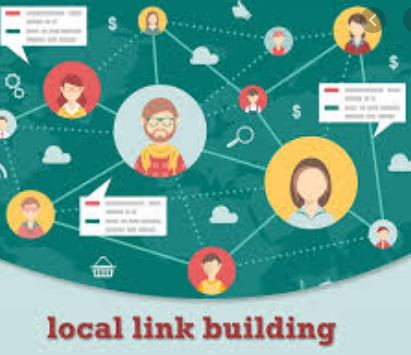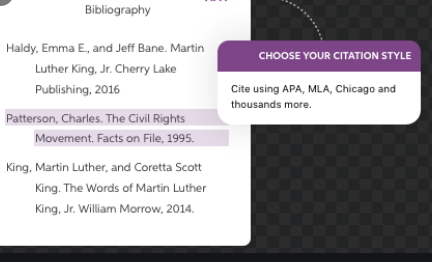When we talk about fool-proof local marketing tactics, often much of the focus is on citations, local directories, and maps. All of these components are important, of course; but to really give yourself an edge, you need to create quality localized content.
What do I mean by localized content? Here, I’m referring to content that is based on or around your local area and educates readers on the specific issues/problems/wants they have. Local businesses can benefit a ton by sharing the purpose and passion behind what they do.
Marketing used to be pretty simple. You developed a compelling message, used mass media to broadcast that message to large audiences, and grew market share. Mostly, you aimed for the meaty part of the curve, where the law of averages conspired in your favor.
Then came the cable TV era. Audiences fragmented and targeting became the order of the day. Instead of starting with the message, marketers thrived on consumer insight and tried to identify a specific emotional trigger that would win them loyal customers.
Now mass marketing has shifted to mass personalization and messaging and targeting have given way to activation. It is no longer enough to simply grab attention, we have to hold that attention. Today’s marketers need to inspire movements in which their customers become their best salespeople. We need to make a fundamental shift in mental models.
Here’s what I recommend: Start a blog (if you don’t already have one), and create content specific to your niche and town. Share why your community is special and how your products or services align with the community’s values. You started your business for a reason; tell your audience and let them connect.
Be sure to use location modifiers in your content, too. For instance, if you are a bakery in Melbourne, Florida, share how your bakery serves that town.
Maps, directories & citations
For local businesses, it’s important to ensure that your business is present (and optimized) on Google Maps. After all, if people can’t get directions to you, then you’re out of luck!
It still amazes me that so many businesses have yet to claim their map listings through Google My Business. This is a simple and easy step that gives you more exposure and allows you to manage how your business appears on Google Maps. Here are Google’s instructions on how to add or claim your listing.
Google My Business is just one of the hundreds of listing sites for local companies. The goal is to claim and update your business listing in as many relevant, legitimate business directories and maps services as you can, and optimize those listings with correct business information. (It’s especially important to ensure that your name, address and phone number are consistent across the web.)
If you want to really be on top of things, I recommend looking into Moz Local or Yext. They’ll help you streamline the process and alert you if something needs to be fixed. They won’t catch everything, but they can provide a good starting point, and they can help you monitor and maintain any listings you have claimed.
Local link building
Link building is perhaps the most important factor when it comes to SEO. But not all links are equal. The directory links we talked about above are great, but they don’t carry the same weight as organic backlinks.

Just like any other backlink strategy, local backlinking begins with good research. City-run sites are a great place for local businesses to start. Many of these local sites have “local directories” on them. Most of the time, all you need to do is email the website admin and request to be added.
Another great place to find local backlinks is with local clubs and outreach organizations. Joining a local Rotary Club or business group will often land you a nice quality backlink. These links are important because they show how connected you are to the community. I’ve seen this work over and over again for clients.
The key is to only link to or get links from, sites you want to be associated with. Make sure that the link makes sense contextually, and never pay to play. Link building is really, at its core, about building relationships. When it comes to local marketing and business, relationships are huge.
Looking for citations
My premise was that while inbound links were the dominant ranking factor for “10 blue links” results, Google’s listing-based results couldn’t rely primarily on inbound links to determine rankings.

The reason? At the time, many businesses in Google’s business index didn’t have websites (some still don’t). Without a website, there’s nothing for other sites around the web to link to. So Google had to develop an alternative ranking algorithm that wasn’t dependent on links.
Your NAP is basically your digital thumbprint – it’s how Google knows that a website is mentioning your business as opposed to someone else’s. The more times Google sees your thumbprint on reputable websites, the more confident Google is that it’s displaying a reputable business in its search results.
Key citation attributes
The core citation attributes are your Name, Address, and Phone number, along with your website. These attributes must be consistent anywhere you expect Google to pick up your thumbprint.
The reality is that mixing and matching your NAP leaves makes it much harder for Google to match mentions of your business. Subsequently, it’s more difficult to give your business credit in the form of rankings. It can also lead to duplicate listings if those mismatches appear in prominent enough sources. This is a headache that no business wants to develop.
NAP consistency – which appears twice in experts’ top 10 individual local ranking factors – is especially important between your own website and Google My Business. The Yoast Local SEO Plugin makes this two-way consistency easy.
Fortunately, in this post, I’ll show you 7 psychological techniques you can use to keep people on your page. And to improve your rankings in Google and other search engines.
Plus how experts have used these techniques on their pages.
Telling a story
Stories are one of the most captivating human experiences. And this starts from early childhood. What is one of the best ways to connect with children and adults? Telling stories.

Because stories make us human.
Whether you engage in website SEO or you build websites or you fly to Mars, you are making stories. That is why history is a bunch of stories about the past.
Paul Zak’s research shows that stories change our brains. He said, “Stories that are personal and emotionally compelling engage more of the brain, and thus are better remembered than simply stating of facts.”
Now, you need to find the story that your audience cares about and can connect to. When writing about a topic, what are the stories behind it that can captivate readers?
Use lists of three
People use lists to memorize objects. Even though you’ve probably heard that the brain can hold as many as 7 items at a time, a list of 3 is usually more memorable.
Looking around the world, many things exist in the list of 3 to aid better retention. The executive, the legislative, and the judiciary. The father, the son, and the holy spirit. The good, the bad, and the ugly. I came, I saw, I conquered.
To make your content memorable to readers and to hold their attention, make a list of 3 items that relate to your post.
Use curiosity to attract
There are very few pieces of content that are entirely new. How do you make your content unique and keep your visitors from bouncing off your page?
Curiosity can be a lifesaver in this case. It will give your reader a piece of information, then create a reason to find out more.
This is supported by a curiosity study which found that people learn and retain more information when they are curious.
Appeal to emotions
Everybody is emotional when it comes to a topic they care about. When people are searching about how to clean their homes, they want that emotion of feeling good about their neat environment.
When you look for tips that will give you an edge in the search results page, you want to beat your competitors, gain more customers, and increase revenue. In other words, you want that thrill of winning and serving people.
If you appeal to the right emotions, you will have a reader from the beginning of your content right till the end. Some common emotions to consider are:
While creating a piece of content, think of emotions that relate to the topic. And find a way to weave them into your content.
Use questions to increase engagement
Questions help you reawaken people who are thinking of their last tweet while reading your post.
When you ask questions, you either make people realize the fact they know the answer or are ignorant of it.
Whatever your aim, it will keep your audience engaged.
To give your questions the best effects possible, you should ask them at the points where you are about to reveal important details to your audience.
Check out this example of a post about buying traffic by Lindsay Marder on Digital Marketer:
Despite the fact she is stating the question concerning the experts, any reader would try to answer this question too. And to even consolidate that, she uses curiosity on the next line.
It is difficult for any reader to stop reading at this point. Perhaps, it is no wonder the post has 4 thousand shares.
Seek to aid consistency
According to human psychology, if you want people to like you, do something for them. If you want them to love you? Get them to do things for you.
That would explain the main reason parents love their children so much.
People want to be consistent.
If they have taken an action due to your instruction or dropped their email address to get your ebook, it’s easier to read your post due to their prior investment.
In the book, Influence, by psychologist Robert Cialdini, he said, “Once we have made up our minds about an issue, stubborn consistency allows us a very appealing luxury: We really don’t have to think hard about the issue anymore.”
You don’t need to ask for a big favor, it’s enough to ask them to take a simple action that would make them invest something while reading. This would make them more likely to read till the end.
The bottom line
Getting organic visitors to stay on your website is much more than the details you want to present. You also have to present it in an attractive way.
When you hook visitors on your page, you can get them to stay longer on your page, visit other pages, and thereby reduce bounce rates. Consequently, search engines will see this as a positive signal and rank your pages higher in the search engine results pages (SERPs).
Of course, not all of these techniques will work all the time. But you can always apply them where possible in your content.

